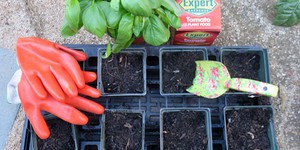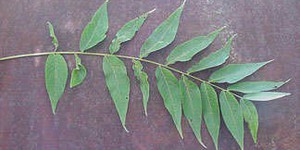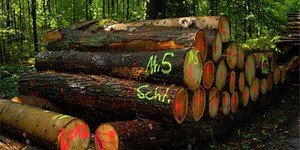Others Like “Native Landscapes” (top 20 results)
|
Research the famous collapse of the Tacoma Narrows suspension bridge.
What lessons were learned about the potentially damaging effects of wind on bridges? What structures stabilize a bridge against wind forces? Build models and use a wind tunnel to test your hypothesis.
Read more
Using just a single sheet of paper (8.5 x 11 inches) and up to five paper clips, can you build a bridge that will span 20 cm and support the weight of 100 pennies? The area beneath the span must be free (so that boats can pass beneath it). To test your bridge, place two books 20 cm apart, and set the bridge on the books, spanning the gap. Do not fasten the bridge to the book (nor to any other support). Does your bridge hold as much weight as you expected it would? If your bridge fails…
Read more
Predict how tall you can build a tower using only two sheets of newspaper as building material. You can't use tape, glue, staples, or anything else, just two sheets of newspaper. You can tear, bend, cut, or fold the newspaper. Try it out and see how close you can come to your prediction. Can you beat your prediction? As you're building, you may come up with ideas to make a better tower. Try them out! (It's not like the materials are expensive!) Here are some variations you might want to…
Read more
Start with 7 drinking straws and 14 paper clips. Use the paper clips to fasten the straws together. Here's how: 1) Clip two paper clips together, narrow end to narrow end. 2) Push the wide ends of each clip into the end of a straw. That's it! Connect four straws to make a square, and three straws to make a triangle. Now test which shape is stronger. Hold the shapes vertically, with an edge or a vertex resting on the tabletop. Have a helper push on the opposite side or vertex. Which shape…
Read more
Floods can be very destructive, capable of leveling whole towns and decimating crops and fields. Typically in regions prone to flooding there are cycles of flooding that occur, usually in areas where a wet season comes after a period of drought. You can use precipitation data to test if incidents of flooding have been preceded by periods of drought. Look for long periods of dryness in the precipitation data to indicate a drought. You can also conduct an experiment on dry or moist soil to see…
Read more
Plants need nitrogen to grow healthy stems and leaves. Although nitrogen is the most abundant element in the air we breathe, that form of nitrogen cannot be used by plants. Nitrogen contained in fertilizer, on the other hand, is readily taken up by plants. In this experiment, you will compare plants grown without nitrogen fertilizer to plants grown with nitrogen fertilizer.
Read more
Every spring, gardeners around the world get ready to plant their summer gardens. They turn the soil over in their garden plots and add nutrients to the soil. Then they plant their seedlings and wait for nature to provide a bounty of fruits, vegetables, and flowers. But nurturing the garden doesn't stop there. In order to get lots of fruits and vegetables, the gardener must eliminate factors that can hurt the plants. Sometimes, chemicals in the soil from other plants and trees can hurt a…
Read more
When pesticides are applied to protect crops, run-off of potentially harmful pesticides is a major problem. Can water plants such as hardstem bulrush, common cattail, parrotfeather and smooth scouring rush promote pesticide breakdown? If so, diversion of irrigation run-off into plant-filled ponds could help reduce pesticide pollution. Mix malathion at 12.5% of the recommended application strength (to simulate dilution by rain or irrigation water). Use 5-gallon buckets for testing various…
Read more
Is soil structure an important factor in earthquake dynamics? Investigate soil liquefaction and how different soil types respond to earthquake movements. Are movements more dramatic in sandy/loamy or clay type soils? Which soil structures are most stable? Which are the most volatile? (MCEER, 2005)
Read more
The conversion of forested to unforested areas has been occurring since humans began to impact and change their environments during the agricultural revolution. Recently deforestation has become a global problem, particularly for developing industrial countries and countries with very large populations. You can use satellite mapping resources to investigate the connection between urbanization, population growth and deforestation. You can also investigate the connection between deforestation…
Read more
|
Explore Our Science Videos
Why Aren't All Medicines Pills?
Follow the Flow: 2017 Engineering Challenge
Harvest Water from Fog Science Project








